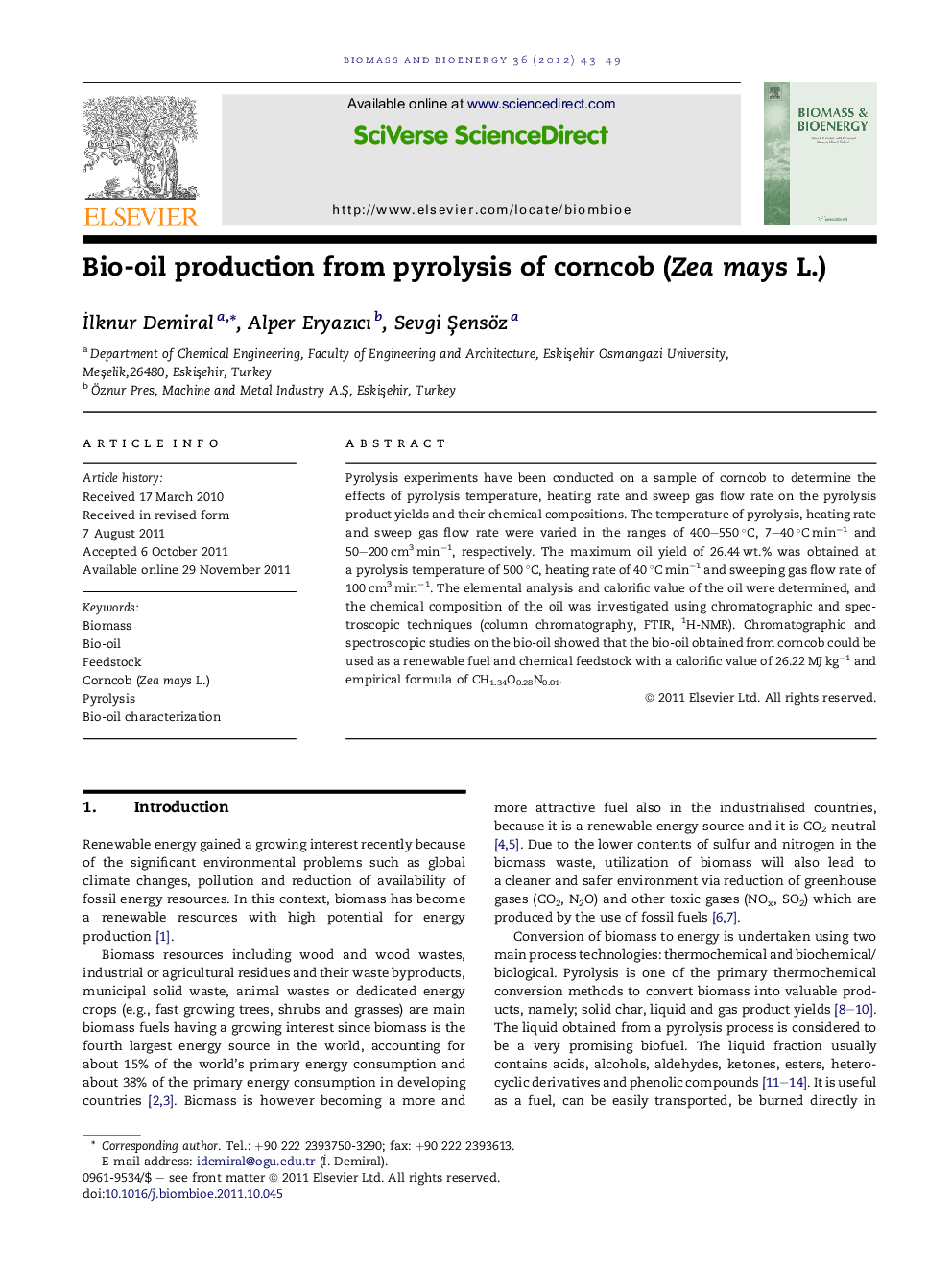| Article ID | Journal | Published Year | Pages | File Type |
|---|---|---|---|---|
| 677540 | Biomass and Bioenergy | 2012 | 7 Pages |
Pyrolysis experiments have been conducted on a sample of corncob to determine the effects of pyrolysis temperature, heating rate and sweep gas flow rate on the pyrolysis product yields and their chemical compositions. The temperature of pyrolysis, heating rate and sweep gas flow rate were varied in the ranges of 400–550 °C, 7–40 °C min−1 and 50–200 cm3 min−1, respectively. The maximum oil yield of 26.44 wt.% was obtained at a pyrolysis temperature of 500 °C, heating rate of 40 °C min−1 and sweeping gas flow rate of 100 cm3 min−1. The elemental analysis and calorific value of the oil were determined, and the chemical composition of the oil was investigated using chromatographic and spectroscopic techniques (column chromatography, FTIR, 1H-NMR). Chromatographic and spectroscopic studies on the bio-oil showed that the bio-oil obtained from corncob could be used as a renewable fuel and chemical feedstock with a calorific value of 26.22 MJ kg−1 and empirical formula of CH1.34O0.28N0.01.
► Pyrolysis of corncob was performed in a fixed-bed reactor under different conditions. ► The yield of 26.44% was obtained at a temperature of 500 °C, a heating rate of 40 °C/min and gas flow rate of 100 cm3/min. ► The oil is a mixture of aliphatic and aromatic hydrocarbons having an empirical formula of CH1.34O0.28N0.01. ► The higher calorific value of the oil is 26.22 MJ/kg, which is very close to those of petroleum fractions. ► FTIR analysis showed that the oil composition was dominated by oxygenated species.
